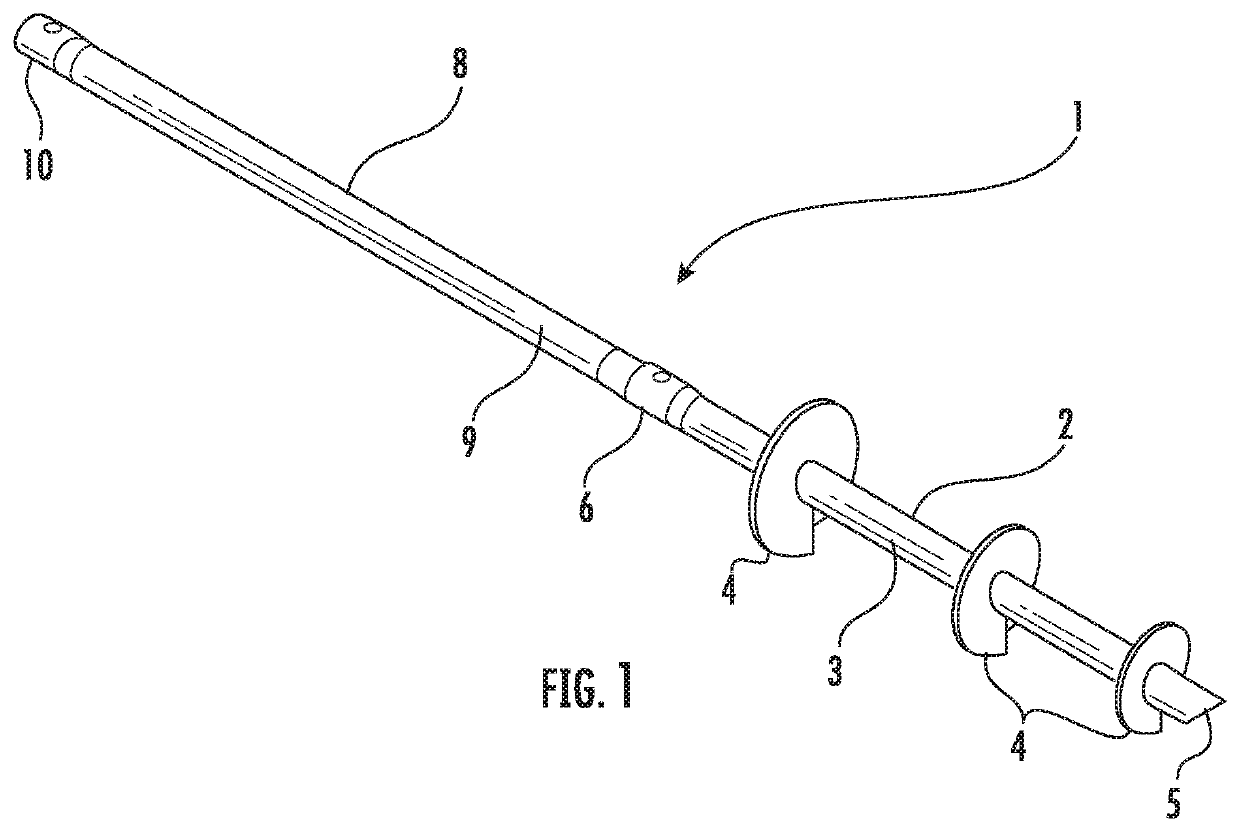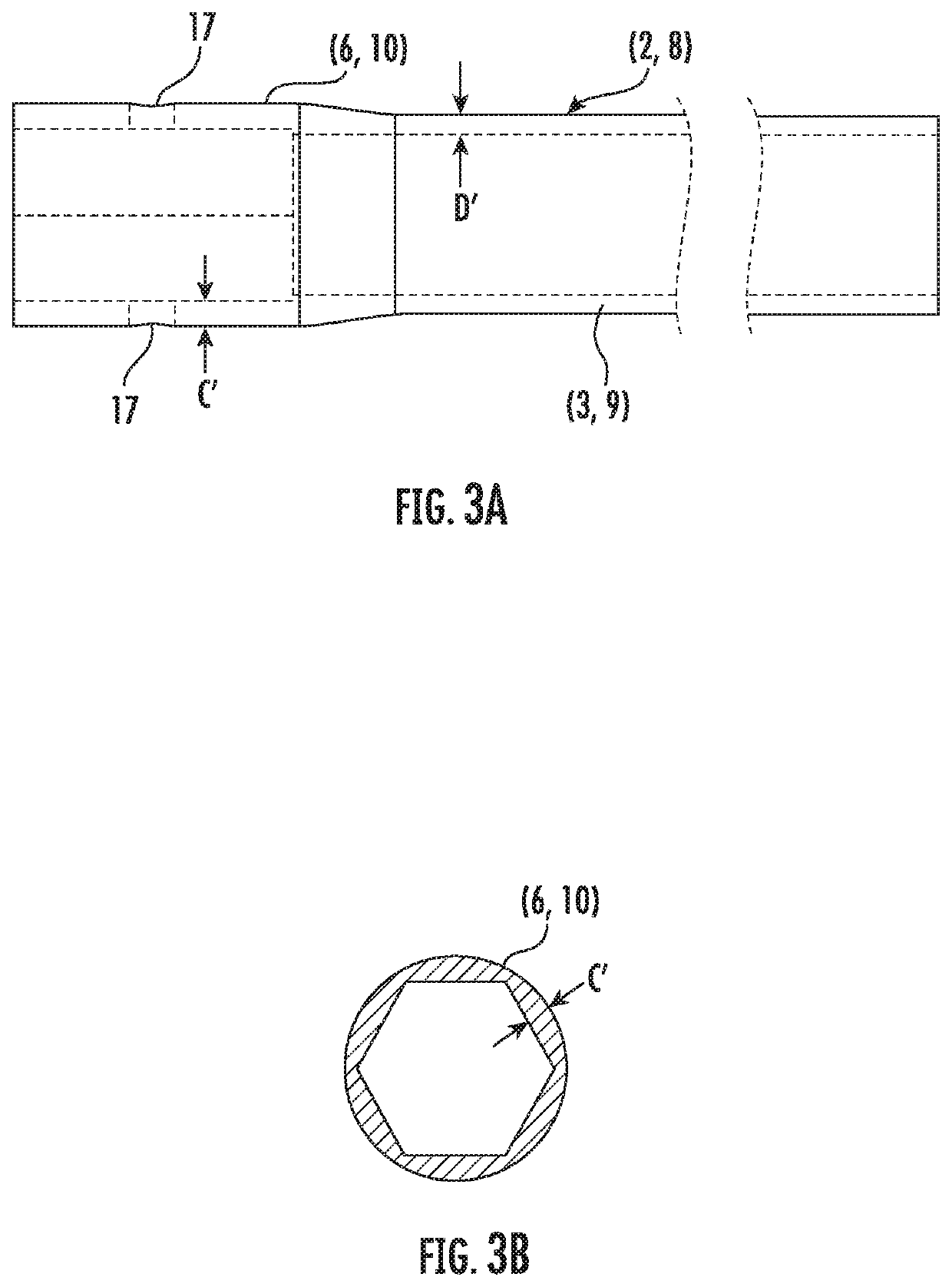Helical pier with thickened hexagonal coupling ends and method of manufacture
a technology of helical piers and coupling ends, which is applied in the direction of engine components, mechanical equipment, foundation engineering, etc., can solve the problems of reducing the initial yield and tensile strength, thinning of the wall structure at the female end coupler section, etc., and achieves the effect of strengthening the coupling join
- Summary
- Abstract
- Description
- Claims
- Application Information
AI Technical Summary
Benefits of technology
Problems solved by technology
Method used
Image
Examples
Embodiment Construction
[0040]As shown in FIG. 1, in accordance with the present invention, a structural anchoring device in the form of a helical pier 1 is shown. Generally speaking, such a helical pier 1 includes a starter section 2, and one or more extension shafts 8. The lower starter section 2 of helical pier 1 is comprised of a main tubular drive shaft section 3 to which one or more helical plates 4 are secured, as by welding. The lower end of drive shaft 3 tapers to a point 5 to facilitate penetration of the ground upon insertion of the pier. Point 5 may take the form of and be constructed in any of a variety of ways, but in the preferred embodiment shown in FIG. 1, it is formed by cutting the lower end of the drive shaft 3 at a 45 degree angle, and leaving the end hollow.
[0041]Flights 4 are helically shaped to cause pier 1 to be screwed into the ground upon rotation of drive shaft 3. Each flight 4 secured to the main drive shaft 3 increases in diameter as the distance from point 5 increases. As sho...
PUM
| Property | Measurement | Unit |
|---|---|---|
| tensile strength | aaaaa | aaaaa |
| tensile strength | aaaaa | aaaaa |
| tensile strength | aaaaa | aaaaa |
Abstract
Description
Claims
Application Information
 Login to View More
Login to View More - R&D
- Intellectual Property
- Life Sciences
- Materials
- Tech Scout
- Unparalleled Data Quality
- Higher Quality Content
- 60% Fewer Hallucinations
Browse by: Latest US Patents, China's latest patents, Technical Efficacy Thesaurus, Application Domain, Technology Topic, Popular Technical Reports.
© 2025 PatSnap. All rights reserved.Legal|Privacy policy|Modern Slavery Act Transparency Statement|Sitemap|About US| Contact US: help@patsnap.com



